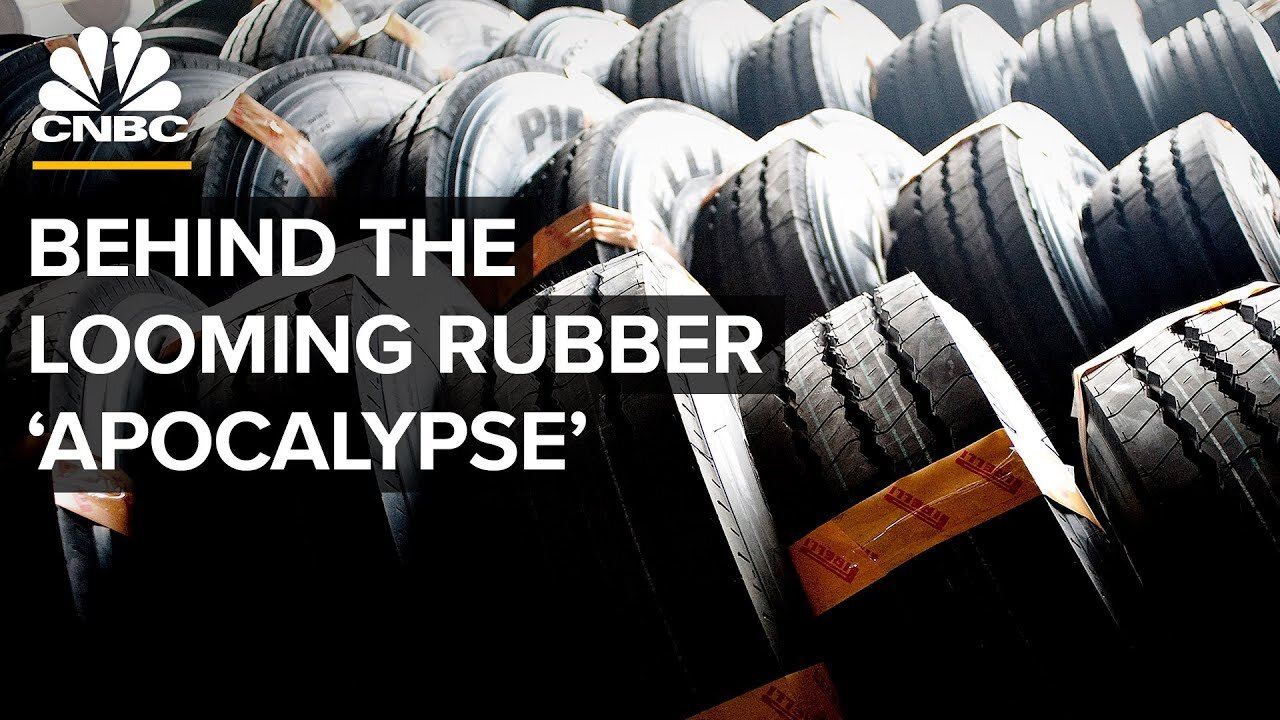Premium Only Content

What The Rubber ‘Apocalypse’ Means For The U.S. Economy
The global economy now faces a rubber shortage because of multiple supply chain disruptions. "We could be on the cusp of a rubber apocalypse," Ohio State University professor Katrina Cornish told CNBC. Rubber producers are working against all odds: climate change, disease and the fight for shipping containers. The global rubber market was valued at nearly $40 billion in 2020, but one analysis predicts the natural rubber market could be worth nearly $68.5 billion by 2026.
Rubber is a critical raw material needed for car tires, personal protective equipment such as masks and gloves, and many more everyday products. Anytime you’re going anywhere, you’re using rubber. Now, supply chain disruptions have thrown the rubber industry into a tailspin.
“We could be on the cusp of a rubber apocalypse,” Ohio State University professor Katrina Cornish told CNBC.
Rubber producers are facing climate change, the Covid-19 pandemic, a destructive fungus and the fight for shipping containers.
The global economy remains dependent on Asia for 90% of the natural rubber supply. For example, the U.S. imported $140 million worth of natural rubber in March 2021 alone, according to Census data.
The global natural rubber market was valued at nearly $40 billion in 2020, and demand for rubber is expected to increase. One analysis predicts the natural rubber market could be worth nearly $68.5 billion by 2026. One reason for the increased demand? Car tires.
“We are using tires more and more,” Stefano Savi, director of the Global Platform for Sustainable Natural Rubber, told CNBC. “The amount of mileage that we’re going to do as a global population is definitely bound to increase, and that’s why the demand for rubber is really continuing to increase.”
-
 LIVE
LIVE
BonginoReport
1 hour agoAnti-Trump Lawyer FIGHTS for Illegals to Vote in WY - Nightly Scroll w/ Hayley Caronia (Ep.56)
3,562 watching -
 LIVE
LIVE
Michael Franzese
46 minutes agoWhy You’ll Never Hear Michael Franzese Talk About Mob Murders
761 watching -
 1:37:28
1:37:28
vivafrei
5 hours agoBitcoin Conference in Vegas! Peter Hotez is a Hack Quack! Liverpool Attack Updates & MORE!
38.5K14 -
 LIVE
LIVE
Ark of Grace Ministries
4 hours agoProphetic Warning: AI and the Battle Over America
1,906 watching -
 LIVE
LIVE
Dr. Drew
4 hours agoWhose Biolab Made COVID-19: China's Wuhan or USA's UNC Chapel Hill? Dr. Li-Meng Yan Debates Dr. Clayton Baker – Ask Dr. Drew
996 watching -
 LIVE
LIVE
Grant Stinchfield
40 minutes agoBlind Liberal Zombies and The Reparation's Racket
138 watching -
 51:10
51:10
Kitco NEWS
1 day agoDollar Destruction: Will It End in Depression, Collapse or Civil War? | Tom DiLorenzo
3582 -
 LIVE
LIVE
Wayne Allyn Root | The Root Reaction
4 hours agoThe Root Reaction LIVE | 27 May 2025
64 watching -
 32:04
32:04
Fit'n Fire
2 days ago $0.06 earned338 ARC & the CMMG Dissent -- Is It Better Than 8.6 Blackout?
2177 -
 14:56
14:56
BEK TV
18 hours agoEP #12 – DUNSEITH DECLASSIFIED: TURTLE MOUNTAIN CORPORATION 1970’S ORIGINS
1.12K